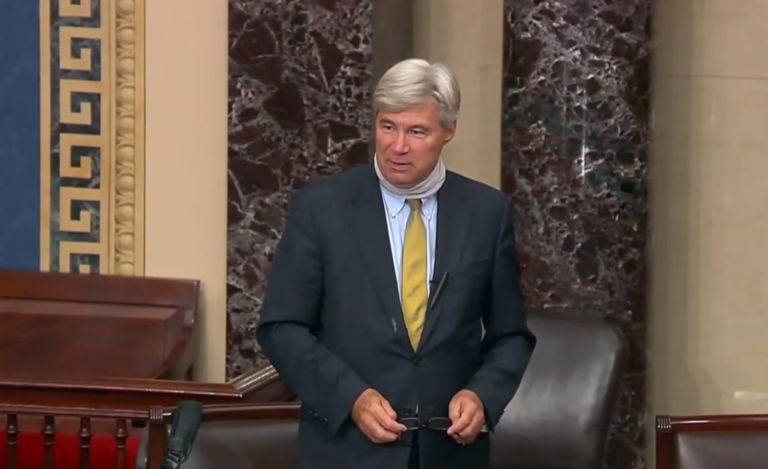Weekly John Locke Foundation research division newsletter focusing on environmental issues.
The newsletter highlights relevant analysis done by the JLF and other think tanks as well as items in the news.
1. The Green energy rip-off, by the numbers
Everyone knows that president Obama’s favorite crony capitalists are "green" businesses. In particular those companies that are involved in the renewable energy industry in one form or another. The now failed Solyndra, a solar energy company that received $535 million in loan guarantees and then lost it all, has become the poster child for critics of these programs. Sterling Burnett at the NCPA Environment blog has taken a more extensive look at some of the prominent losers in these classic crony capitalist schemes. He lists those that are failures and those that are failing. Here are the failures and how much they have cost taxpayers.
- Beacon Power Corp: Received $43 million in federal loan guaranteed in 2009 and also received $29 million in PA grants —Bankrupt in October 2011
- Ener1 (parent company of EnerDel): Received $118.5 million in federal loan guarantees — Bankrupt in January 2012 — has since exited bankruptcy
- Evergreen Solar: Received $58 million in MA loan guarantees (an undisclosed portion sourced from federal ARRA block grant) — Bankrupt in August 2011 with $485.6 million in debt
- Solyndra: Received $535 million in federal loan guarantees in 2009 and $25.1 million in CA tax credit — Bankrupt in August 2011
- SpectraWatt: Received $500,000 in federal loan guarantees in 2009 — Bankrupt in August 2011
- Babcock and Brown: Received $178 million in federal grants in December 2009 (4 months after it went bust) — Bankrupt in early 2009
- Mountain Plaza Inc.: Received $424,000 in federal grants through TN Department of Transportation in 2009 — Bankrupt in 2003 and again in June 2010
- Solar Trust of America (parent company: Solar Millennium):Received $2.1 billion loan guarantee in April 2011 — Bankrupt in April 2012
2. Warning: light bulbs may be a hazard to your health, especially if they’re green
Most people probably know about the complex set of instructions issued by the EPA for cleaning up a broken compact fluorescent bulb, which is filled with mercury. The first two lines of these instructions are "Have people and pets leave the room" (what does this mean for the person left behind to clean up the broken bulb?) and "Air out the room for 5-10 minutes by opening a window or door to the outdoor environment."
But what if you accidently step on a piece of the broken glass from the bulb? Well you’re probably in pretty big trouble. The Western Berks, PA Fire Department has issued a document to its first responders to an emergency call with the following scenario:
You are dispatched to The Smith residence for a laceration to the foot. Routine run huh? Nope. What you were not told is that Mr. Smith uses CFL lamps in his home. One of those lamps burned-out, and Mr. Smith did not wait for the lamp to cool down before he stood on a chair and removed it. Because the lamp was hot to the touch, Mr. Smith dropped it. As the lamp hit the floor, it exploded. As Mr. Smith descended from the chair he stepped, barefooted, into the broken glass and exposed mercury.
They follow this with some photos of what Mr. Smith’s foot is likely to look like. These photos are so grotesque that they preceed them with a warning — and this is a document for professional firefighters. The document then goes on to explain how the fire fighters should handle the situation being sure to note that "the debris is lawfully a Hazardous Material and must be disposed of accordingly," further explaining that "a more thorough clean-up regimen may need to be employed. Private companies exist that specialize in this type of operation."
Well, so much for the idea that regulation was supposed to protect us from harm.
3. Ozone Report
NC’s low ozone season continues. The 2012 ozone season began on April 1 and each week during the ozone season this newsletter will report how many, if any, high ozone days have been experienced throughout the state during the previous week, where they were experienced, and how many have been recorded during the entire season to date. The ozone season will end on October 31st. All reported data is from the North Carolina Division of Air Quality, which is part of the state’s Department of Environment and Natural Resources. During the period June 11th to June 17th there were no reported high ozone readings on any of the state’s monitors. There have been no high ozone days thus far this season.
Click here for the Environmental Update archive.


